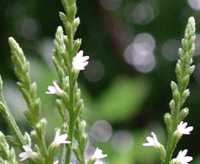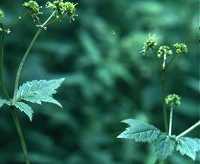| Campanulaceae (Lobelia) |
|---|
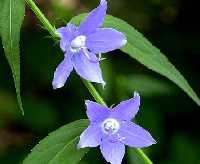
| |
Campanula americana
Tall Bellflower:
Stems with milky sap, hollow, slightly winged.
5 fused petals, protruding stamens; long, curving style at center.
|
|
| Lamiaceae |
|---|
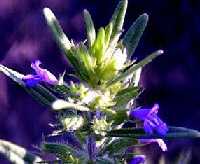
| |
Hedeoma pulegioides
American Pennyroyal:
Pale-bluish flowers in small clusters around stem.
Much-branched, somewhat hairy and square stem.
Small leaves, thin and narrow.
Entire herb has strong mint odor and pungent taste, used as food seasoning instead of salt.
|
|
|
| Asteraceae |
|---|

| |
Helianthus strumosus
Pale-leaf Sunflower:
Glabrous stems, thick rhizomes.
Petiolate, thick leaves with rough upper surface and smooth or finely toothed edges, opposite except top 2 or 3.
In Helianthus, disc flowers are female and form seeds, ray flowers are male.
|
|
| Asteraceae |
|---|
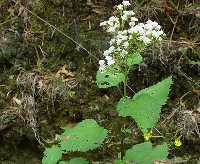
| |
Eupatorium rugosum
White Snakeroot:
Opposite serrated leaves.
White disk flowers with long filaments and style.
Contains barium sulphate. Cows which graze on the plant produce poisonous milk.
|
|
|
| Caprifoliaceae (Honeysuckle) |
|---|

| |
Triosteum perfoliatum
Late Horse Gentian (Feverwort):
Leaves entire with small hairs, clasp stem.
Red flowers emerge from the axis of the leaves and are without stalks.
Fruit a bright orange berry with three seeds, can be roasted and used as a coffee substitute.
|
|
|
| Urticaceae (Nettle) |
|---|

| |
Pilea pumila
Clearweed:
Deep green leaf is conspicuous in late summer.
Small tannish flower clustered along stem.
Stem of young plant appears to be translucent.
Lacks stinging barbs.
|
|
|


